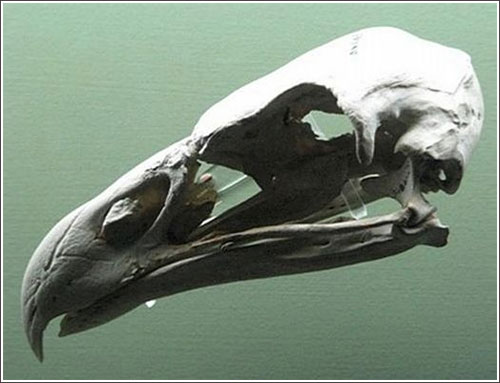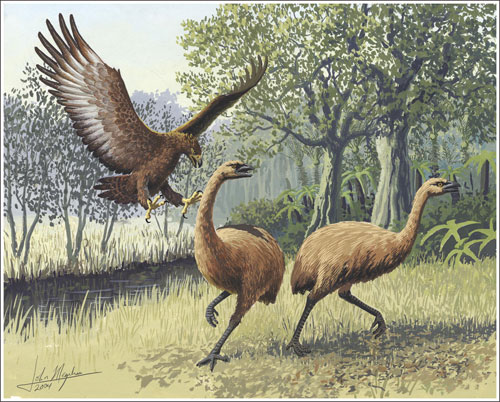New discovery about giant eagle species attacking humans
Aggressive giant eagles can attack humans at any time, seemingly just products of imagination that appear in movies. However, according to a recent study, the fearsome predatory predatory bird in the legend is completely real.
Scientists know about the existence of the Haast eagle, a giant scavenger bird species, for centuries thanks to the analysis of excavated fossil bone samples, but behavior and their habits are not clearly defined.
Previously, scientists often used computerized CT scans to reconstruct the image of Haast eagle from a piece of fossilized skull that they excavated. According to these analyzes, the eagle weighs only 40 pounds, so scientists think they are scavengers rather than human predators as described in Legendary stories.

Skull of a Haast eagle (Photo: novinky.cz)
However, the latest study revealed that the eagle is truly a terrifying predator. They can plunge from the cliffs and attack birds that have no defenses or children who are extremely aggressive and bloodthirsty.
Two CT researchers Paul Scofield of New Zealand's Museum of Canterbury and Ken Ashwell of New South Wales University used CT and CAT endoscopy to reconstruct the size of the brain, eyes and spinal cord of the giant This extinct ancient eagle.
These parameters are compared with the corresponding parameters of predators and predators of today to analyze the way Haast eagle habit. Accordingly, Professor Scofield said the results they received were similar to those described in Maori legend stories when talking about the eagle. " These scientific studies show that the legends of cannibal eagles are completely true, not fiction, " he said.

The image recreates giant eagles eating meat.(Photos: Wikipedia)
The researchers also confirmed that the eagle evolved very quickly from their ancestors with a smaller form. Their growth rate is much larger than that of the brain. They believe their bodies grow faster than the brain during the Pleistoxen period about 700 thousand to 1.8 million years ago.
' This work is a great demonstration of the great effect of using modern medical devices and technologies to explain ancient secrets, ' said Professor Ken Aswell.
Before this human settlement in New Zealand, this eagle is the largest animal. Scientists believe that the extinct Haast eagle is due to the destruction of residents and newly arrived Polynesians.
- Giant Eagle Philippines
- The albino eagle appears in the United States
- Video: Giant squid attacked submarine
- Eagles are so strange in appearance that everyone believes that they are ... masquerade
- Bald eagle robs fish of people
- The eagle owl lays eggs after 23 years is thought to be male
- Understanding the giant carnivorous bird known as the
- Trace necklace with eagle claw 40,000 years old
- Amazingly the eagle swung an 8-year-old girl
- The most dangerous birds on the planet
- Image of mixed war eagle
- Found 1,900 year old eagle statue between London
 Discovered an ancient centipede fossil 99 million years old
Discovered an ancient centipede fossil 99 million years old Discovered bat-like dinosaurs in China
Discovered bat-like dinosaurs in China Discovered a 200-year-old bronze cannon of the coast
Discovered a 200-year-old bronze cannon of the coast Discover 305 million-year-old spider fossils
Discover 305 million-year-old spider fossils